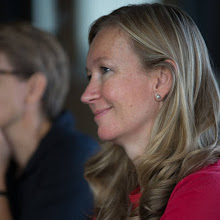Status updates, narrative beginnings and chronotopes
The social network of Facebook complicates locating the beginning of the sequence of status updates. Walker Rettberg points out that blogs are dominated by the present tense, supported by technology that prioritizes the new (2008: 65). Status updates share a similar focus on recency, as writers respond to the question of what they are doing ‘right now’. Like email in-boxes and blogs, status updates appear in reverse chronological order, so that the most recent activity appears at the top of the list the reader encounters when opening their profile. If the reader wants to reconstruct the updates in the chronological sequence in which they were posted, they have to visit the writer’s profile page, extract the status stories from the archive of wall interaction and read backwards from the furthest point in the list. So the sequence of status updates has at least two points of inception: the assumed chronological beginning of the events which are posted about, or the position of the most recent update.
In addition, unlike blogs and email in-boxes which build a single archive of an individual’s interactions, when status updates are posted, they appear not only on the writer’s profile but also distributed via RSS feeds into each of their Friends’ profiles. Individual status updates are thus simultaneously positioned in multiple sequences which we might explain using Bakhtin’s concept of the Chronotope (1966). The Chronotope plots two intersecting parameters: the time and space of a narrative. Here I am re-appropriating this matrix to plot the sequence of status updates that appears in the writer’s profile against the sequence of updates that appear in the Friends’ news feed page. Heuristically, we might think of the first of these as the ‘narrative of the individual’ – the series of their life experiences documented in status updates, which intersects with the ‘narrative of the social network’ – the sequence of all Facebook activity constructed by the RSS technology into a single temporal series. The status update ‘knots together’ the life documentation of the individual with that of their community in the social network as a point of intersection between the writer’s profile and its distribution across the online context. So, not only does the position of the initial update continuously change relative to subsequent facebook activity (it will move further down the archive as new activity supersedes it in recency), it also changes relative to the newsfeed that it is being distributed into across the network. For the narrative of the network is not a homogenous entity but a composite mass constructed from the profiles of potential hundreds of Friends. What this means is that it becomes very difficult to think of the series of status updates as a single chronological thread, with a unique starting point and unified trajectory. Instead, the position of any given status update will occur in potentially hundreds of combinations within the space of the online community.
In addition, unlike blogs and email in-boxes which build a single archive of an individual’s interactions, when status updates are posted, they appear not only on the writer’s profile but also distributed via RSS feeds into each of their Friends’ profiles. Individual status updates are thus simultaneously positioned in multiple sequences which we might explain using Bakhtin’s concept of the Chronotope (1966). The Chronotope plots two intersecting parameters: the time and space of a narrative. Here I am re-appropriating this matrix to plot the sequence of status updates that appears in the writer’s profile against the sequence of updates that appear in the Friends’ news feed page. Heuristically, we might think of the first of these as the ‘narrative of the individual’ – the series of their life experiences documented in status updates, which intersects with the ‘narrative of the social network’ – the sequence of all Facebook activity constructed by the RSS technology into a single temporal series. The status update ‘knots together’ the life documentation of the individual with that of their community in the social network as a point of intersection between the writer’s profile and its distribution across the online context. So, not only does the position of the initial update continuously change relative to subsequent facebook activity (it will move further down the archive as new activity supersedes it in recency), it also changes relative to the newsfeed that it is being distributed into across the network. For the narrative of the network is not a homogenous entity but a composite mass constructed from the profiles of potential hundreds of Friends. What this means is that it becomes very difficult to think of the series of status updates as a single chronological thread, with a unique starting point and unified trajectory. Instead, the position of any given status update will occur in potentially hundreds of combinations within the space of the online community.


0 Comments:
Post a Comment
<< Home